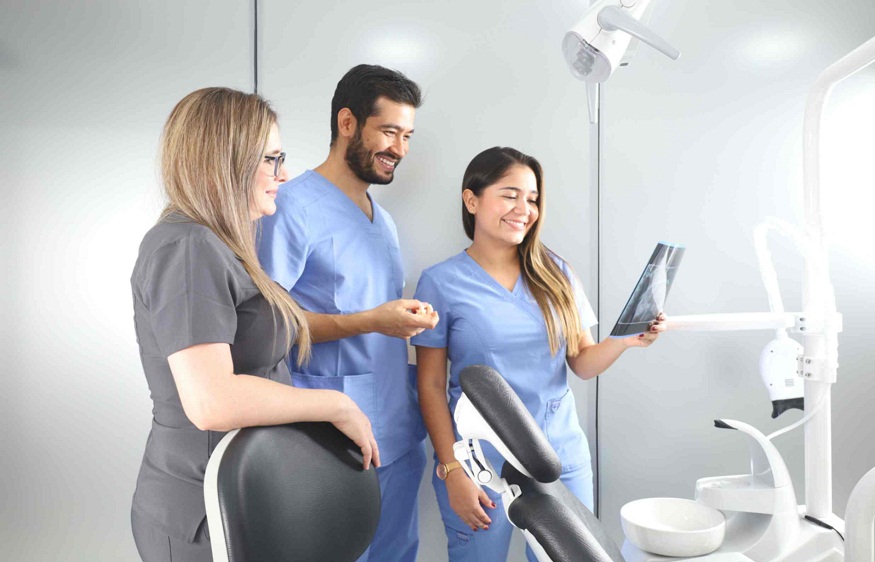AI diagnostics are advancing considerably in dentistry and are already beneficial for an Orange Park general dentist clinic where the application helps to avoid mistakes and increase the diagnostic proficiency of dentists. More so, through machine learning and better imaging, AI can capture dental-related data with much better precision than the human eye can detect seeing that it can identify areas that may be hard to spot by the naked eye.
On a serious note, technology analysis happens by analyzing massive data, which an average dentist can use to make better decisions with high accuracy in cases where the former may have made wrong diagnoses. Such an approach enhances patient-practitioner relations and presents a better form of practice for healing.
How Does AI Improve Diagnostic Precision?
Whether it be with a lengthy list of patients’ previous dental appointments or a complicated dental radiograph, AI’s ability to sort through significant information makes it possible for dentists to diagnose dental problems with a degree of precision that is difficult for humans to achieve.
AI algorithms analyze digital dental impressions and radiographs and can identify whether there exists anatomic variations in the tooth structure or in the gums, and the status of the bone that cannot be seen during oral clinical inspection.
For instance; AI can examine features indicative of tiny signs of decay, infection, or disease, at their inception, allowing for treatment or cure. This greater diagnostic precision minimizes the chances of patient misdiagnosis, allowing clients to obtain the best-personalized treatment plans.
How does AI improve business processes involved in Predictive analysis in Dentistry?
Looking at the patterns and trends of data from the patient dossier, the AI system can also offer dentists predictive analysis and thus make patients aware of potential dental situations before they worsen. AI then comes in by processing the information gained from other patient characteristics, dental history, and possibly family history, in order to generate a prognosis for future dental health.
This fosters advised or preventive health care measures in that risks that may culminate in the development of severe ailments are that every patient will possess optimum dental health. This paper points out that predictive analysis makes it easier for practitioners to prepare for preventive measures, hence minimizing the chances of complications that may arise from untreated ailments.
In what ways does Artificial Intelligence save time in diagnosis and increase the rate of performance?
Dental procedures are made efficient by the integration of AI diagnostic tools, thus allowing them to carry out more extensive investigations in a shorter time. Firstly, applying AI to analyze first scans and X-rays, helps practitioners to make quicker decisions and will enhance patient flow without detriment to their diagnostics.
Diagnostics also saves time that can be greatly utilized in dental practices since dentists spend a lot of time on patients and their treatment rather than providing immense labor for analysis. Therefore, the use of AI increases practice efficiency in diagnostics while denying practitioners consistent output quality, as well as benefiting both clinicians and patients.
How does AI reduce the probability of error by a human?
AI diagnostics are free from human input and as such reduce the likelihood of errors. While using AI systems, there is no question of the system getting bored, distracted, or possessed with bias to produce wrong information. First, the use of objective analytical metrics allows for eliminating subjective approaches when assessing each patient’s condition and ensuring a unified approach throughout the AI system.
The use of AI also provides an opportunity to get a second opinion in real-time which confirms the dentist’s findings and produces a conclusion that can minimize the chance of missing something. In consequence, patients enjoy greater diagnostic security and more targeted therapies.
Conclusion
Diagnostic applications that are powered by artificial intelligence have become the driving force behind enhanced accuracy as well as predictive analysis in dentistry, all the while saving a rather large amount of the efforts of a human dentist. That is why with the help of implementing AI-based solutions, dental practitioners can provide clients with better methods of oral care. Because of this method, AI guarantees that oral diseases are detected and treated effectively, which stabilizes patient health and contributes to the enhancement of dental services.

